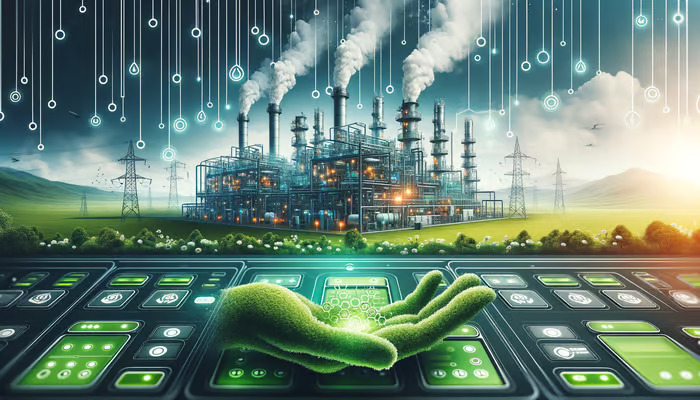[ad_1]
Powering the Future: Cutting-edge Energy-efficient Technologies for a Greener World
As concerns about climate change and environmental sustainability continue to grow, the need for energy-efficient technologies has never been more pressing. With the global population expected to reach 9.7 billion by 2050, the demand for energy is only going to increase. However, the current methods of energy production are not sustainable in the long run, as they rely heavily on fossil fuels that contribute to greenhouse gas emissions and air pollution.
The Importance of Energy Efficiency
Energy efficiency is the key to reducing our carbon footprint and ensuring a sustainable future for generations to come. By using energy more efficiently, we can reduce the amount of energy needed to power our homes, businesses, and transportation systems. This not only helps to lower energy costs but also decreases the strain on the environment by reducing greenhouse gas emissions.
Renewable Energy Sources
One of the most promising solutions to our energy needs is the use of renewable energy sources such as solar, wind, and hydropower. These sources are abundant, clean, and renewable, making them ideal for powering our future. Solar panels, for example, can harness the power of the sun to generate electricity, while wind turbines can convert the wind’s kinetic energy into electrical power. Hydropower, on the other hand, uses the energy of flowing water to generate electricity.
Smart Grid Technology
Another cutting-edge technology that is revolutionizing the way we power our world is smart grid technology. Smart grids are electrical grids that use digital communication technology to detect and react to changes in electricity supply and demand. By optimizing the flow of electricity, smart grids can reduce energy wastage and improve the overall efficiency of the grid. This not only helps to reduce energy costs but also ensures a more reliable and resilient energy system.
Energy Storage Solutions
Energy storage is another key component of a greener future. Energy storage solutions such as batteries and pumped hydro storage can store excess energy generated from renewable sources for use during times of high demand. This helps to balance the supply and demand of electricity, making the grid more stable and efficient. In addition, energy storage can also provide backup power during outages and emergencies, ensuring a reliable source of electricity at all times.
Electric Vehicles
As the transportation sector is one of the largest contributors to greenhouse gas emissions, the adoption of electric vehicles (EVs) is critical to reducing our carbon footprint. EVs are powered by electricity instead of gasoline, which means they produce zero tailpipe emissions. With advancements in battery technology and infrastructure, EVs are becoming more affordable and practical for everyday use. By transitioning to electric vehicles, we can significantly reduce our dependence on fossil fuels and decrease air pollution in our cities.
Common Questions About Energy-efficient Technologies
How do energy-efficient technologies help the environment?
Energy-efficient technologies help the environment by reducing the amount of energy needed to power our homes, businesses, and transportation systems. This, in turn, lowers greenhouse gas emissions and air pollution, leading to a cleaner and healthier planet.
Are renewable energy sources reliable?
Yes, renewable energy sources such as solar, wind, and hydropower are reliable sources of energy. While they may be intermittent depending on weather conditions, advancements in technology have made it possible to store excess energy for use during times of high demand.
What are the benefits of smart grid technology?
Smart grid technology offers several benefits, including improved energy efficiency, reduced energy costs, and a more reliable and resilient energy system. By optimizing the flow of electricity, smart grids can help to reduce energy wastage and ensure a stable supply of electricity at all times.
How can I contribute to a greener world?
There are many ways to contribute to a greener world, such as reducing your energy consumption, using energy-efficient appliances, and supporting renewable energy initiatives. By making small changes in your everyday life, you can help to reduce your carbon footprint and protect the environment for future generations.
Conclusion
As we look towards the future, it is clear that energy-efficient technologies are essential for a greener and more sustainable world. By harnessing the power of renewable energy sources, implementing smart grid technology, and adopting energy storage solutions, we can reduce our carbon footprint and ensure a cleaner environment for generations to come. With advancements in technology and a commitment to sustainability, we can power the future in a way that is both efficient and environmentally friendly.
Let us all work together to build a greener world for ourselves and future generations!
[ad_2]












